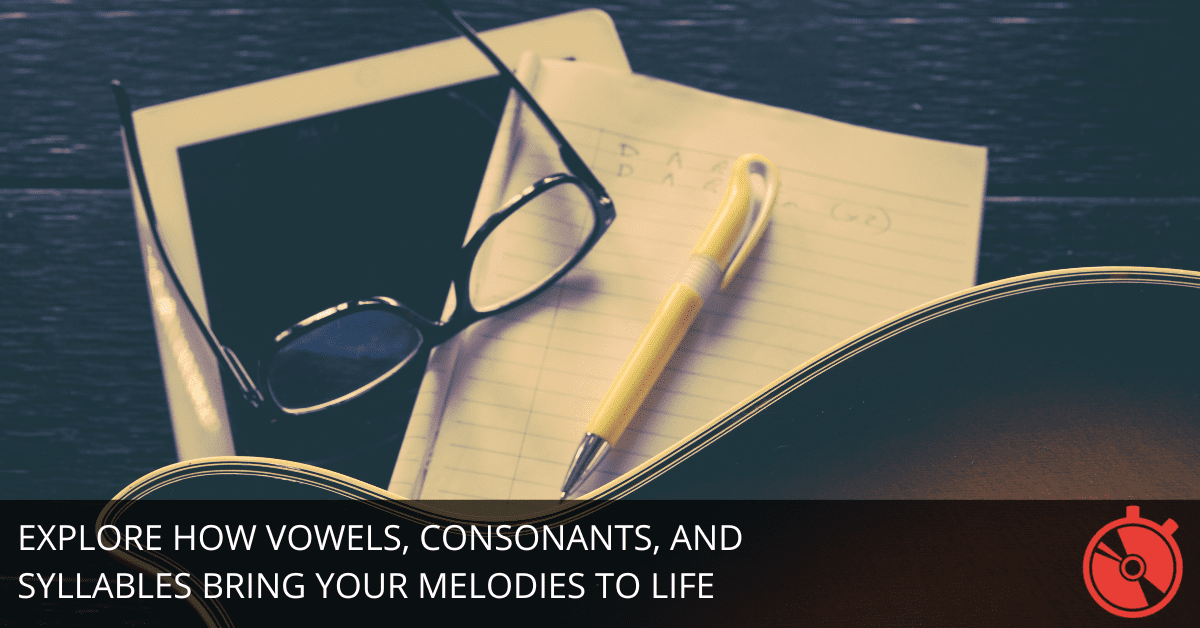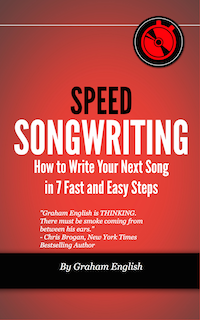
Songwriting is about more than just words and music. It's about how those words sound as they tumble over the melody.
Phonetics—the study of sounds—plays an underrated but vital role in shaping a song’s emotional impact and memorability. Think of it this way: syllables are the building blocks of your lyrics, and their sounds either fit snugly into your melody or fight against it.
Let’s explore why this matters and how to use phonetics to elevate your songwriting craft.
Why Phonetics Matter in Songwriting
Ever wonder why certain phrases feel so natural to sing while others seem awkward? It’s all about the way syllables align with the melody.
Smooth, open vowels like "ah" and "oh" carry longer, creating emotional resonance in slower, sustained melodies. Sharp, punchy consonants like "t" or "k" add rhythm and energy to upbeat tracks.
For instance, imagine the difference between singing "love" versus "beloved." The single syllable "love" lands cleanly, while "beloved" stretches over two or three beats, demanding more space. Understanding these nuances lets you shape lyrics that fit your melodies like a glove.
The Power of Vowels in Melodies
Vowels are the secret sauce of memorable hooks. Open vowels like "ee," "oo," or "ah" resonate longer and feel more fluid, making them perfect for sustaining notes. Just hum "We Are the Champions" by Queen. The vowels stretch effortlessly, adding drama and grandeur to the melody.
Here’s how to use this:
- Identify key moments in your melody where a note lingers.
- Replace rigid, consonant-heavy words with ones that feature open vowels.
For example, instead of “fist,” try “hand” or “hold.”
By leaning into vowel sounds, your lyrics will flow more naturally with the melody, making the song easier—and more enjoyable—to sing.
When Consonants Carry the Beat
If vowels are the emotional anchor, consonants are the rhythmic engine. Crisp sounds like "p," "t," and "d" create percussive effects, giving your melody a punchy, driving quality. This is why hip-hop lyrics often emphasize consonants to enhance the beat.
Try this: write a simple phrase like "feel the fire." Now replace it with "stoke the fire." Notice how the sharp "t" and "k" in "stoke" give the line more energy than the softer "f" in "feel."
To make your lyrics snap:
- Use consonant clusters (e.g., "crash," "click," "grit") for power.
- Pair them with short, staccato melodies for maximum impact.
Syllable Stress and Melody Shape
Every word has a natural rhythm based on which syllable is stressed. When this rhythm matches the melody, the result feels intuitive. When it clashes, the lyrics feel awkward or forced.
Let’s test this: Say the word “forget.” The stress falls naturally on the second syllable (for-GET). If your melody stresses the first syllable instead, it feels wrong: FOR-get. Now, apply this concept to lines like “when time flies.” The stress lands naturally on “time” and “flies,” making the phrase satisfying to sing.
To align syllables with melody:
- Sing your lyrics aloud to find the natural stress points.
- Adjust your melody or rephrase your lyrics to match.
Phonetic Patterns Create Memorability
Repetition and rhyme aren’t the only tools for crafting catchy songs. Phonetic patterns like alliteration (repeating consonant sounds) and assonance (repeating vowel sounds) add subtle hooks that embed themselves in the listener’s mind.
Take the line "She sells sea shells by the seashore." The repeated "s" sounds give it a rhythmic, hypnotic quality. In songs, similar patterns elevate the groove.
In your lyrics, try this:
- Use alliteration sparingly in verses for texture: “whispering winds.”
- Deploy assonance in choruses for singability: “stay, play, away.”
Editing for Phonetic Flow
Once you’ve written a draft, focus on phonetic flow. Sing each line aloud and listen for where the syllables feel clunky or interrupt the melody. Words with multiple hard consonants (like “backdrop”) often disrupt the flow, while simpler alternatives (like “anger”) smooth things out.
Here’s a quick fix:
- Record yourself singing the song.
- Circle any words where you stumble or where the melody feels tight.
- Swap in alternatives with fewer syllables or softer sounds.
For example, instead of “complicated situation,” try “twisted story.” The latter is easier to sing and conveys the same idea.
Matching Phonetics to Emotion
Different sounds evoke different feelings. Soft consonants like "m" and "l" create a soothing effect, perfect for love songs. Hard consonants like "k" and "t" evoke tension or aggression, ideal for breakup anthems.
Picture a line like “broken glass beneath my feet.” The hard "k" and "g" sounds intensify the imagery. Now swap in softer words: “Feathery dreams beneath my feet.” It’s gentler, altering the emotional tone entirely.
When writing, ask yourself:
- What’s the emotional core of this section?
- Do the phonetics amplify or dilute that emotion?
Experimenting with Gibberish
Many songwriters hum gibberish over a melody before adding real lyrics. This trick taps into the subconscious, letting the melody dictate the phonetics. Those random syllables often reveal the natural sounds your song craves.
Here’s how to use gibberish effectively:
- Record yourself humming nonsense lyrics to your melody.
- Pay attention to recurring sounds or vowel shapes.
- Build your real lyrics around those sounds.
For instance, if your gibberish keeps landing on “ah” sounds, lean into words like “heart,” “far,” or “start” when crafting lyrics.
Templates for Phonetic Success
Not sure where to start? Use these phonetic templates to match your song’s mood:
- Romantic Ballad: Focus on open vowels and soft consonants (e.g., "I feel your love surround me").
- High-Energy Pop: Combine sharp consonants with upbeat syllables (e.g., "Get up, move fast, don’t wait").
- Dark and Edgy: Emphasize hard consonants and short vowels (e.g., "Cut through the noise and fade").
Using these templates, you can craft lyrics that complement the melody and amplify your song’s emotion.
Bringing It All Together
Phonetics isn’t just a technical detail—it’s the bridge between your melody and lyrics. By paying attention to how syllables and sounds interact with your music, you can write songs that feel effortless to sing and unforgettable to hear.
Start by singing your draft lyrics aloud. Find where the sounds clash or shine. Adjust them to fit the melody, and watch as your songwriting transforms.
Because the truth is, great lyrics aren’t just written—they’re shaped. And when phonetics works in harmony with melody, magic happens.

Enter your first name and email address below and click “GET ACCESS NOW!” to get the Speed Songwriting Cheat Sheet delivered to your inbox!
We guarantee 100% privacy. Your information will not be shared.

Hi Graham:
This is awesome info. I’m going to try to get this to work for me.
Thanks for the kind words! Let me know how it goes. I’d love to hear about your results or answer any questions as you put it into practice. You’ve got this!